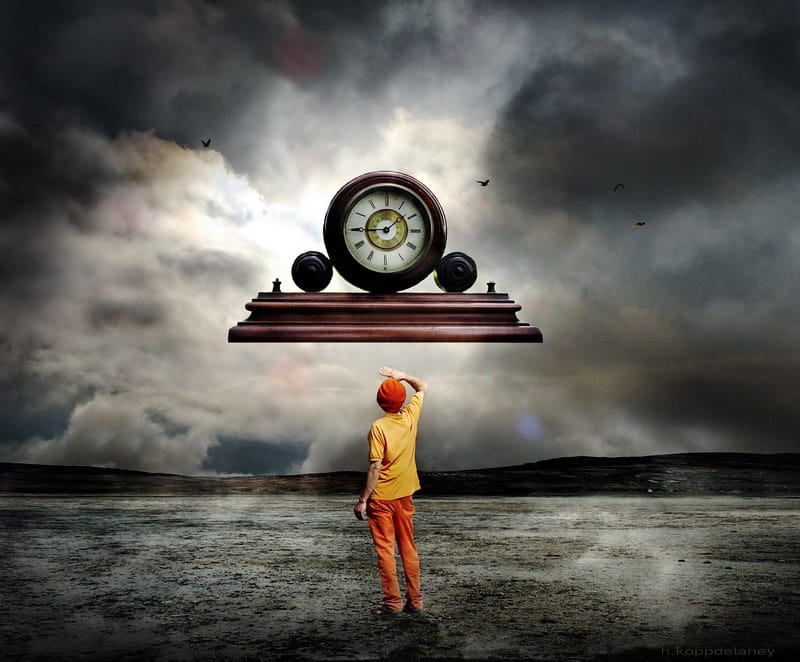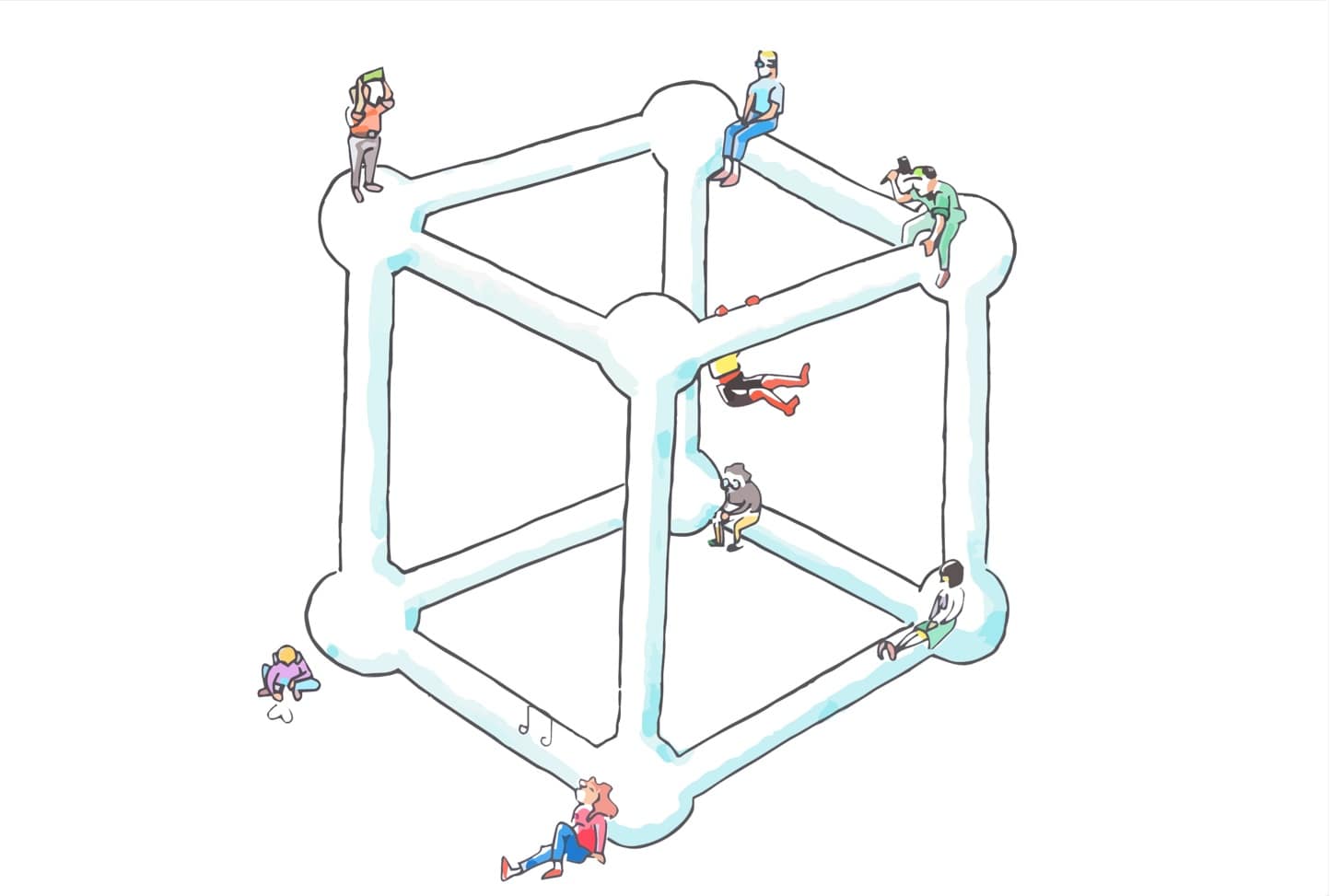
Time perception in a never-ending pandemic
Psychology students participating in the University Honours College follow a workshop on Blogging Science, in which they learn to communicate science to the general public by means of informing, giving an opinion, and relating science to issues in society. A selection of these blog posts is published on Mindwise. Today’s post is by Xinyi Zhou.
For both humans and other animals, despite the absence of a sensory organ specialised in time perception, the awareness of time is made possible by biological and cognitive processes subserving functions of an “internal clock” (Church, 1984). What sets humans apart, however, is the subjective experience of time’s speed separate from the speed of the external time (Droit-Volet & Wearden, 2016). Therefore, while objectively, time never changes speed, we humans perceive time as flashing by at times, and dragging on at others. Most of us have been confronted with such time distortions at various points in life. Especially over the course of the pandemic, we might often find ourselves complaining about how time in lockdown seems never-ending. Probably just as frequently, when looking back on the weeks or months that have elapsed, we wonder where all the time went. How can the supposedly same time periods pass by at one speed when we’re living it, but at another when we look back?
As it turns out, different mechanisms may be at play when we judge the passage of time at present (i.e., how fast is time passing right now?) and in retrospect (e.g., how fast did the past month go by?).
What Determines the Speed of Time at Present?
The subjective experience of time passing at present can reflect one’s internal state; specifically, the attentional and emotional state. Generally speaking, time slows down when more attention can be allocated to the passing of time, as is the case during routine activities or boredom (Block & Zakay, 1997). Conversely, the more attention is captivated by tasks at hand, such as when complexity of the task increases, the less of it is left for the processing of time, leading to the feeling that time is speeding up. However, there is a limit to the extent to which complexity of a task can accelerate time; when the mental effort demanded by a task exceeds one’s capacity, attention would be less engaged and in turn, time slows down again (Flaherty, 1993).
“Generally speaking, time slows down when more attention can be allocated to the passing of time, as is the case during routine activities or boredom”
As suggested by the popular expression “time flies when you are having fun”, the emotional state plays a role in our sense of present time passage as well. Specifically, studies have related hedonic feelings such as excitement and enjoyment to higher rates of time passage, and the opposite was found when people experience negative emotions such as sadness and depression (Wearden et al., 2014). Similarly, higher levels of positive arousal (e.g., excitement) may speed up the passing of time (Droit-Volet & Wearden, 2015). It is however a different story for negative kinds of arousal such as fear and the activation of the fight-or-flight mode in response to danger, as a typical report among people who have been through emergency situations such as car accidents is that time seemed to stand still during the event (Arstila, 2012), suggesting that arousal may influence subjective time speed through more than one process.
“Our emotional state plays a role in our sense of present time passage: ‘time flies when you are having fun'”
What Happens When We Look Back in Time?
While judgement of present passage of time is believed to be a function of one’s attentional and emotional state, retrospective judgement of time relies more on memory processes (Block & Zakay, 2008). This difference of the mechanisms is key to understand the paradox of time feeling both fast and slow mentioned earlier. The human brain tends to judge how quickly a past event or time period went by based on how many distinct memories were made during the time. Think about a time where you went on a trip somewhere for the first time; time flew by while you were on the trip, yet when you look back on it once home, so many novel memories are retrieved that it feels like the trip lasted longer than it did. In contrast, life in lockdown filled with routines may feel slow while you are in the middle of it, but once it is over, memories of identical days merge together, and the time in lockdown now seems to have whizzed by instead of dragging on.
“People use external time markers such as readings from a clock to infer that time must have gone by fast.”
There have been speculations that besides memory processes, external time markers such as sunrise/sunset, and date on the calendar may also play a role in retrospective judgements of time passage. In a recent study by Wearden et al. (2014), participants reflected on their past experiences of fast passage of time. The authors found that those reports typically entailed the participants taking notice of an external time marker such as readings from a clock and inferring that time must have gone by fast. You may have also noticed in your personal experience that people tend to remark on how fast time has passed by making references to external indicators of time (“I can’t believe 2021 is almost over, time flies!”). Indeed, such external time cues may already have been too integrated in our daily life to be ignored when thinking about retrospective judgements of time passage.
So, by the time the pandemic is over, and you look back at its start, it might seem as if it was just yesterday, or it could feel like a lifetime has passed. But no matter how it would be for you, you may find comfort in knowing that you are now better equipped for making sense of time distortions like this.
Note. Image by h.koppdelaney at flickr.
References
Arstila, V. (2012). Time Slows Down during Accidents. Frontiers in Psychology, 3, 1-9. https://doi.org/10.3389/fpsyg.2012.00196
Block, R. A., & Zakay, D. (1997). Prospective and retrospective duration judgments: A meta-analytic review.Psychonomic Bulletin & Review, 4(2), 184–197. https://doi.org/10.3758/bf03209393
Block, R. A., & Zakay, D. (2008). Timing and remembering the past, the present, and the future. In S. Grondin (Eds.), Psychology of time. (pp. 367–394). Emerald Group Publishing.
Church, R. M. (1984). Properties of the Internal Clock. Annals of the New York Academy of Sciences, 423(1 Timing and Ti), 566–582. https://doi.org/10.1111/j.1749-6632.1984.tb23459.x
Droit-Volet, S., & Wearden, J. H. (2015). Experience Sampling Methodology reveals similarities in the experience of passage of time in young and elderly adults. Acta Psychologica, 156, 77–82. https://doi.org/10.1016/j.actpsy.2015.01.006
Droit-Volet, S., & Wearden, J. (2016). Passage of Time Judgments Are Not Duration Judgments: Evidence from a Study Using Experience Sampling Methodology. Frontiers in Psychology, 7. https://doi.org/10.3389/fpsyg.2016.00176
Flaherty M.G. (1993). Conceptualizing variation in the experience of time. Sociological Inquiry, 63(4), 394–405.
Wearden, J., O’Donoghue, A., Ogden, R., & Montgomery, C. (2014). Subjective duration in the laboratory and the world outside. In V. Arstila & D. Lloyd (Eds.), Subjective time: The philosophy, psychology, and neuroscience of temporality. (pp. 287–306). Boston Review.



